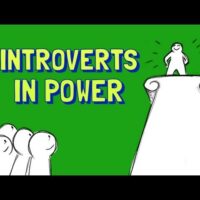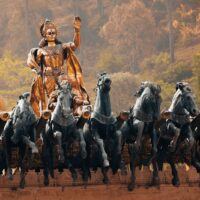The Unspoken Truth About Adolf Hitler

When Adolf Hitler was dying, he reportedly said, “My spirit will rise from the grave, and the world will see I was right.” This statement, whether apocryphal or not, resonates eerily in the modern digital age. In researching this very topic, I came across hundreds of reels on Instagram where the comment sections shocked me. Almost every other person seemed ready to believe that Hitler was right, that he was a visionary far ahead of his time. On the other hand, a cursory search will yield countless articles, blogs, and YouTube videos from around the world that unequivocally declare Hitler as the personification of evil.
This stark dichotomy raises a crucial question: What is the actual truth? Was Hitler a genuine devil, a great leader, or is there another side to his story that has been intentionally hidden from us? Is he a good guy or a bad guy? If I were to state my position, I would say I am neutral. You might be shocked to hear someone say they are neutral about a figure like Hitler, asking, “Are you saying Hitler was not a bad guy?”
Whenever we hear the name Hitler, three things immediately come to mind. First, that this one man was responsible for the slaughter of millions of people in a manner so horrific that even the torments of hell might pale in comparison. Second, the Second World War; the belief that if Hitler had not existed, World War II would likely never have happened. And third, the word that has become almost synonymous with his name: antisemitism. This term refers to the hatred of Jews, a people whose religion is primarily associated with Israel, based on their culture and faith. The moment the word antisemitism is mentioned, Hitler’s face materializes in our minds, for it was under his command that 6 million Jews were systematically hunted down and murdered simply for their identity.
But this leads to a series of profound questions. Can one man, acting alone, truly kill millions? Can a single individual orchestrate the Holocaust of 6 million people from a single religion? Can one person single-handedly ignite a world war? How much of this is truth, and how much is manufactured narrative? By the end of this detailed exploration, the answers will become clearer. Furthermore, you will discover the surprising connections between market leaders of today—from BMW and Porsche to IBM and Volkswagen—and the story of Adolf Hitler.
Be warned: this is an examination of Hitler that delves into territories so controversial that it might challenge established narratives. Therefore, before such perspectives are silenced, it is crucial to understand them fully.
Let me be clear from the outset: this is not a standard biography of Hitler. We will not dwell on where he was born, what his parents did, or the minutiae of his childhood. Thousands of videos already cover that ground, and I have no desire to repeat the same tired facts and waste your time. This work is the result of over two months of intensive research. We have read everything possible about Hitler—books, articles, research papers—and have thoroughly analyzed his speeches. We have personally consulted with subject matter experts. I can confidently say that the Hitler discussed here is the one who has been intentionally hidden from the public eye. We will decode the aspects that mainstream media has never dared to tap into.
What Role Did World War I Play in Creating Adolf Hitler?
On July 28, 1914, the First World War began, a cataclysmic conflict that split the world into two factions: the Allied Powers and the Central Powers. The war raged relentlessly for four long years, finally ending in 1918 after claiming the lives of over 20 million people. Germany was a key member of the Central Powers alliance. What many people don’t know is that Adolf Hitler was a participant in World War I, not as a frontline combatant, but as a Gefreiter who served as a dispatch runner, a dangerous role that required him to carry messages between the command headquarters and the front lines.
He was reportedly chosen for this particular job because of his charisma; those who received his messages were often impressed by him. However, it was during this duty that an event occurred which would alter the course of his life, and indeed the world, forever. In 1918, during the final phase of the war, Hitler was posted to a small village in France. During a massive attack, he was severely wounded. A gas attack temporarily blinded him in one eye, and in his disoriented state, he began running in the wrong direction. Suddenly, a British soldier appeared before him.
That soldier was Private Henry Tandey, a highly decorated and skilled combatant. Yet, when Tandey saw the wounded and unarmed Hitler, he made a fateful decision. Despite Hitler being an enemy soldier, Tandey lowered his rifle and let him go. Little did Henry Tandey know that the “innocent” man whose life he spared that day would go on to be responsible for the deaths of millions of innocents.
After narrowly escaping death, Hitler managed to reach a German hospital. His condition was dire. The gas attack had caused temporary blindness, and his left shoulder was so badly injured that his hand would tremble for the rest of his life. It was while recovering in this hospital bed that he received news that made him break down and weep: World War I was officially over, and Germany had surrendered.
The defeat was a crushing blow for Germany. The nation was left economically devastated and militarily neutered. The morale of its citizens was shattered. As a condition of its surrender, Germany was forced to sign a punitive agreement known as the Treaty of Versailles. This treaty is arguably one of the single most significant factors behind Hitler’s eventual rise to the position of dictator.
In simple terms, the treaty was an agreement that imposed crippling economic and military restrictions on Germany, plunging the nation from a bad situation into an abyss of despair. The treaty led to hyperinflation so severe that citizens had to carry wheelbarrows full of cash just to buy a loaf of bread. The German people grew increasingly frustrated and angry, directing their rage primarily at their own government, the Weimar Republic. They blamed the government for their defeat in the war, for their economic ruin, and for the humiliation of having to sign such a degrading treaty.
It was in this cauldron of instability and national outrage that Adolf Hitler began his political ascent.
How Did Hitler Transform from an Unknown Soldier to Germany’s Dictator?
Adolf Hitler, a former soldier who had served his country with dedication during the war, was also a charismatic and powerful speaker capable of easily manipulating public sentiment. With the German populace already seething with anger towards their current government, the stage was perfectly set for a new leader to emerge. The stars, it seemed, had aligned in Hitler’s favor. The German people saw in him the strong leader they desperately craved, and in a shockingly short period, Hitler went from being just another political leader to the absolute dictator of a nation that was, until then, a democracy.
So, how did this meteoric rise from a common soldier to a totalitarian dictator actually happen? In 1920, a leader named Anton Drexler formed the National Socialist German Workers’ Party. When Hitler entered politics, he took this existing party, repackaged it, and rebranded it as the Nazi Party. Under the banner of this party, Hitler launched his political manifesto, which he called the “25-Point Program.”
In this manifesto, Hitler made a series of bold promises. He vowed to pull Germany out of unemployment, to reject and cancel all the humiliating peace treaties imposed on the nation after the war, and to restore Germany’s national pride. However, nestled within these popular promises were more sinister points.
The 25-Point Program: Key Tenets
| Popular Promises | Sinister Agendas |
| End unemployment in Germany. | Only those with “pure German blood” could be citizens. |
| Reject the Treaty of Versailles. | All immigrants and non-ethnic Germans were to be expelled. |
| Restore Germany’s national pride and military. | The Jewish community was explicitly blamed for Germany’s problems. |
He declared that only those with pure German blood flowing through their veins could be citizens of Germany. This meant that all immigrants and non-ethnic Germans were to be expelled from the country.
The most controversial and fateful promise of this manifesto was the scapegoating of the Jewish people. It explicitly blamed the entire Jewish religious community for Germany’s dire situation. Through this 25-Point Program, Hitler promised the German people:
“I will make Germany great again.”
This promise resonated deeply and won the hearts of a broken and desperate population.
In 1923, Hitler made a bold and reckless move. He attempted to overthrow the government in a rebellion known as the Munich Beer Hall Putsch. The attempt failed, and he was arrested and imprisoned. It was during his time in jail that he wrote his infamous book, Mein Kampf (My Struggle). In this book, he laid out his ideologies, his racial theories, and his future plans for Germany. After his release from prison, he reorganized his scattered party and began participating in elections.
Then came 1929, the year of the Great Depression. Germany’s economy, already fragile, was completely shattered by the global financial crisis. The situation went from terrible to catastrophic. Hitler masterfully exploited this crisis. Through his powerful speeches, he portrayed the Nazi Party as the only entity capable of rescuing Germany from its poverty and despair.
However, there was a problem. The government was in the hands of others, and the Chancellor—Germany’s equivalent of a Prime Minister—was not him. To gain power, Hitler needed to become Chancellor. By 1932, the Nazi Party had significantly increased its number of seats in the parliament, the Reichstag, making Hitler a prominent political figure. Yet, he still lacked a majority. Power remained in the hands of Paul von Hindenburg, the aging President of Germany.
The Revolving Door of Chancellors (1932-1933)
| Chancellor | Appointed | Notes |
| Heinrich Brüning | March 1930 | Dismissed by Hindenburg in May 1932 for failing to solve the economic crisis. |
| Franz von Papen | June 1932 | Failed to gain majority support in the Reichstag and was also dismissed. |
| Kurt von Schleicher | December 1932 | Attempted to neutralize the Nazi party, prompting von Papen to scheme against him. |
Before von Papen, a man named Brüning was Chancellor, but he was unable to fix Germany’s worsening problems and was dismissed. Von Papen took his place but also failed to make any significant progress, leading President Hindenburg to dismiss him as well and appoint Kurt von Schleicher as the new Chancellor. Von Schleicher, along with von Papen and other conservative elites, began devising plans to dismantle and neutralize Hitler’s growing Nazi Party.
But as we know, in the game of politics, loyalty is fleeting. Power is the only currency that matters. Obsessed with reclaiming his position, von Papen realized he needed to secure support from a major political force to form a majority. He had only one viable option: Adolf Hitler.
Von Papen secretly met with Hitler and revealed von Schleicher’s plans to destroy the Nazi party. He then made Hitler an offer: “Join me. I will personally speak to Hindenburg and convince him to make you the Chancellor of Germany. In return, all I want is the position of Vice-Chancellor.” Von Papen’s motive was cunning. He and Hindenburg believed they could install Hitler as a puppet Chancellor while they pulled the strings from behind, wielding the real power indirectly. Hindenburg, weary of a string of ineffective Chancellors, was desperate for a new face. He knew that, at that moment, no one had the popular support that Hitler commanded. They despised Hitler for his extremist ideology but arrogantly assumed they could control him.
Both von Papen and Hindenburg were oblivious to the fact that the man they were trying to manipulate was a grandmaster of manipulation himself. Hitler accepted von Papen’s offer without negotiation.
On January 30, 1933, Adolf Hitler was appointed Chancellor of Germany, with von Papen as his Vice-Chancellor.
Hindenburg and von Papen were confident they could control him. They were catastrophically wrong. Within just one month, Hitler flipped the entire game on its head.
On February 27, 1933, exactly one month after Hitler became Chancellor, a massive fire broke out in the German Parliament building, the Reichstag. Hitler immediately blamed his political opponents, the Communists, for the act of arson. He used the incident as a pretext to declare a state of emergency and seize extraordinary powers. He passed the Enabling Act, a law that gave him the authority to enact new laws without the approval of the parliament.
This act was nothing short of a license for dictatorship.
Using these new powers, Hitler systematically eliminated all his opponents one by one, including von Papen. In 1934, President Hindenburg died. Immediately after, Hitler declared himself the Führer—the supreme leader, the absolute dictator of Germany. And just like that, the nation that once had a democracy was now under the iron fist of a totalitarian regime.
Were Other 20th-Century Leaders Just as Brutal as Hitler?
We now arrive at the most critical part of this analysis. Just as a strong foundation is essential for a tall building, understanding the context of Hitler’s rise to power was necessary to fully grasp the arguments that follow. In the introduction, I mentioned that three primary accusations are leveled against Hitler: the mass murder of millions, starting World War II, and his virulent antisemitism. From the perspective of mainstream media, these are the pillars that construct his image as a devil.
Now, let’s remove the lens provided by the mainstream media and put on one of investigation. Let’s try to decode, using facts, logic, and statistics, what the actual truth is. Was Hitler truly an unparalleled evil, or was he a manufactured one?
Let’s first deconstruct the killings attributed to Hitler. Pay close attention, as the names and numbers I am about to present might be shocking.
Mao Zedong
The first name on this list is Mao Zedong of China. He was a leader who became the sole reason for the deaths of tens of millions of people in just a few short years. Mao devised a plan to transform China from an agrarian society into an industrial powerhouse overnight. This plan was called the Great Leap Forward. No one could have imagined how catastrophic this plan would be. To execute it, Mao forcibly collectivized farmland, seizing land from farmers and bringing it under government control. People were forced into labor and given unrealistic production targets for grain and steel—quotas that were humanly impossible to meet. In this climate of fear, officials began submitting fake reports to save their own skins. The result was a devastating famine between 1959 and 1961, the largest man-made famine in human history. Approximately 30 to 40 million people starved to death. It is said that people were reduced to eating tree leaves, and in some places, even soil and human bones. Even more horrifying, Mao launched a campaign against anyone who opposed his plan, called the Cultural Revolution. Under this campaign, he incited students and common citizens against his critics, leading to thousands more deaths and the brutal torture of countless others.
Joseph Stalin
The second name on the list is Joseph Stalin, the dictator of the USSR (modern-day Russia). At the same time that Hitler was building concentration camps in Germany, Stalin had turned his entire country into one giant camp. In the 1930s, paranoid that someone might usurp his power, Stalin did something that will send shivers down your spine. In 1936, he initiated the Great Purge, also known as the Great Terror. What was the Great Purge? In essence, anyone who challenged Stalin or was perceived as a potential threat was eliminated. From army officers to poets, writers, and teachers, they were either shot or sent to the Gulags.
What were the Gulags? These were massive labor camps established in the harshest regions of the USSR, like the Arctic and Siberia, where the average winter temperature is -40° Celsius. Children, the elderly—anyone sent to a Gulag—usually only returned as a corpse. Beyond the Gulags, Stalin, much like Mao, engineered a man-made famine called the Holodomor between 1932 and 1933. He confiscated all the grain from Ukrainian farmers and sent it to Moscow. As a result, 3 to 4 million people in Ukraine alone starved to death. If we take the overall estimates from the Gulags, the purges, and the famines, Stalin alone was responsible for the deaths of over 20 million people. And here is the truly astonishing part: Joseph Stalin was nominated for the Nobel Peace Prize. Twice.
Hideki Tojo
Let’s go further down the list. Hideki Tojo, the dictator of Japan. In the Chinese province of Manchuria, he established a secret facility called Unit 731. To call it a facility is an understatement; it was a human slaughterhouse. Here, Japanese scientists conducted deadly experiments on living civilians and prisoners of war. For example, they would dissect live people without anesthesia to observe their internal organs while they were still functioning. They tested biological and chemical weapons like plague bacteria and mustard gas on human subjects. Countless such bone-chilling experiments were conducted at Unit 731, where an estimated 500,000 to 1 million people were killed between 1936 and 1945. And the irony? When these deadly experiments were exposed after the war, instead of being punished, many of the scientists were secretly hired by the United States, which used their expertise for its own benefit.
Comparison of Death Tolls (as cited in text)
| Leader | Country/Regime | Estimated Deaths | Key Atrocities Mentioned |
| Mao Zedong | China | 30 – 40 million+ | Great Leap Forward, Cultural Revolution |
| Joseph Stalin | USSR | 20 million+ | Great Purge, Gulags, Holodomor |
| Hideki Tojo | Imperial Japan | 0.5 – 1 million | Unit 731 Experiments |
| Others (mentioned) | Various | 2 million+ (each) | Pol Pot, Enver Pasha, etc. |
The Core Question
This list is filled with names like Pol Pot, Ismail Enver Pasha, Winston Churchill, and Leopold II of Belgium, all of whom were responsible for at least 2 million deaths.
This begs the question: when the topic of mass killings comes up, why does Hitler’s name always come first? Why not the others? The reason lies in character assassination. But why would anyone want to assassinate Hitler’s character, more so than others? The difference between Hitler and these other dictators was that they presented their crimes under the guise of “cultural revolution” or “national development.” Hitler, on the other hand, openly admitted to his crimes in his speeches. This made him an easy target.
If you study World War II, you will find that the Allied Powers also killed countless innocent people through bombings and famines. But they whitewashed their crimes by framing them as necessary actions to stop a great evil. To do this, they needed a centralized villain, and Hitler fit the role perfectly. To sum it up in one line:
“He who wins the war writes the history, and he who writes the history always portrays himself as the hero. And for a hero to look great, there must be a villain in the story.”
Think about this carefully. If we apply the same scenario to Hitler’s case, don’t we see a similar pattern? “Hitler killed six million Jews?” But what about Stalin’s killing of millions of innocents? What about Mao’s man-made famine, which caused the deaths of tens of millions?
Am I trying to justify Hitler’s crimes with all this? No. Am I saying what Hitler did was right? A big no. What Hitler did was, without a doubt, wrong. But was what these other men did right? I am simply trying to understand why the very actions that earned one man the title of “devil” resulted in a Nobel Peace Prize nomination for another, or the title of “philanthropist” for someone else. Why were one man’s atrocities rebranded as “development” and another’s as a “cultural revolution”? My point is, if the conversation is about mass killings, and Hitler is hated for this reason, then on the list of mass killers, he doesn’t even make the top three.
Why Did Hitler Target the Jewish People Specifically?
Henry Ford, the founder of the Ford Motor Company, was one of the few Americans whom Hitler admired.1 Not only did he admire him, but in 1938, Hitler awarded Ford the Grand Cross of the German Eagle, the highest honor Germany could bestow upon a foreigner.2 Hitler even mentioned in his book, Mein Kampf, that he was a great fan of an American carmaker—that carmaker was none other than Henry Ford.
But why did Hitler have such a soft spot for Henry Ford? The reason was Ford’s antisemitic writings. Ford believed that the Jewish community controlled almost every influential institution—banks, media, major unions—and that they were indirectly running the world.3 To propagate this view, in 1918, Henry Ford purchased a nearly bankrupt newspaper company, The Dearborn Independent.4 From 1920 to 1924, he used this newspaper to publish a weekly series on the front page titled, “The International Jew: The World’s Foremost Problem.” This series convinced millions of people, not just in America but globally, that Jews were indeed a threat to the world. Hitler was deeply impressed by Ford’s antisemitic stance.
You might be wondering what the Jewish people could have possibly done to warrant such intense hatred from figures like Hitler and Ford. Hitler, in particular, is infamous for his antisemitism. To understand this, we need to go back in time.
Many believe that the persecution of Jews was confined to Germany and was solely because of Hitler. But what if I told you that this is only 0.1% of the story? The remaining 99.9% is a history that mainstream media rarely touches.
Look at this timeline: from 722 BC and 586 BC to 1493 and 1948, across empires and nations like the Roman Empire, England, France, Spain, Austria, and Portugal, a common event occurred. These are the years and places from which the Jewish community was expelled. For centuries, Jews were being systematically kicked out of one country after another. Even today, Jews complain that they have been persecuted everywhere.
| Year/Period | Location / Empire |
| 722 BC & 586 BC | Kingdom of Israel/Judah |
| 139 BC | Rome (expelled with others) |
| 1182 | France |
| 1290 | England |
| 1394 | France |
| 1421 | Austria |
| 1492 | Spain |
| 1497 | Portugal |
But the question is, why? And even more importantly, what is Hitler’s connection to all this? To understand Hitler’s role, we must first answer why Jews were expelled from so many countries. In the early periods, the primary reason for their expulsion was their religion. Delving deep into why their religion was a problem would require a separate documentary. For now, a simplified explanation is that Judaism, Christianity, and Islam are all considered Abrahamic religions. Due to certain religious contradictions among them, conflicts were common. According to the New Testament of the Bible, it was the Jews who were responsible for the crucifixion of Jesus Christ. These religious conflicts led to the persecution of Jews, who were a minority community, and they were often expelled from various countries. They were denied jobs and respect in society.
So, what happened? Since the system would not accept them, they created their own system. With their survival at stake, they entered into any business possible, and many of these businesses were considered illegal or shady at the time. They entered sectors like money lending (banking), prostitution, art, entertainment, and media. They became so successful and amassed so much wealth that even today, Jews own or run many of the world’s top companies: Goldman Sachs, BlackRock, Vanguard, Warner Bros., Universal Pictures, Meta, Dell, Oracle—the list is incredibly long. It is claimed that most of the websites today are owned by Jews. Conversely, in Israel, where the majority of Jews live, a bill was passed in 2016 to ban pornographic websites.5 It was also said that Jews would go to any lengths for their own benefit.
So, what’s the point here? The point is that from central banking and media to entertainment and oil, whoever controls these sectors can easily control the world. Now, let’s return to our original question: What was Hitler’s connection to all this?
As I mentioned earlier, Hitler fought with dedication for Germany in World War I. After the war, he learned that Germany had lost. During that time, a rumor circulated in Germany that the country’s Jewish community had supported the enemy nations during the war, betraying their own country. Although many historians deny this, it was a hot topic of discussion at the time. Second, Germany’s defeat had left its economy and overall situation in ruins. Third, a small Jewish population controlled a majority of Germany’s influential institutions. Fourth—and many people don’t know this—Hitler was a skilled artist who created breathtaking paintings. When he applied for admission to Vienna’s Academy of Fine Arts in 1908, he was rejected.6 Whether by coincidence or design, the professor who rejected him was Jewish. And fifth, as mentioned, there was a long-standing conflict between Christians and Jews due to religious contradictions.
So, what happened was this: when Hitler entered politics, he knew that to gain power, he needed to seize upon an issue that would resonate with the masses. Given the pre-existing hatred for Jews among Germans due to religious conflicts, the allegations of betrayal during World War I, and the fact that Jews were a micro-minority, Hitler found his perfect political weapon. He began to openly spread hatred against Jews through his speeches. This manufactured hatred eventually culminated in the brutal murder of 6 million Jews. While some historians dispute the number of 6 million, what I feel is that whether it was 6 million, 600,000, or 6,000, a crime is a crime.
Let’s return to the three things for which Hitler is hated. Our second point was antisemitism. The world hates Hitler for this. If you go through mainstream narratives and history textbooks, it seems as if Hitler invented the word “antisemitism.” But as the historical record shows, hatred towards Jews existed in many countries for thousands of years. This sentiment of antisemitism was not born in a day, a year, or even a decade; it had been evolving for hundreds, even thousands of years. What Hitler did was weaponize this pre-existing sentiment. He showed the world that if public sentiment is used wisely as a tool, even an ordinary soldier can become a dictator.
So the question arises: for an ideology that had been prevalent for thousands of years and was merely weaponized by Hitler, is it fair to direct all the hatred for antisemitism solely at him? If we are talking about antisemitism, then from England to Spain, France to the Middle East, almost every country was steeped in it. A country is made of its people, which means the people of these countries supported the hatred of Jews, making their expulsion possible. So why is only Hitler’s name associated with antisemitism, and not anyone else’s?
Is It Possible That Hitler’s War Was Not Against Nations, But Against Bankers?
Look at the Tabulation. They all have one thing in common. All these individuals were either assassinated or were the targets of major attacks. And these are not ordinary people; they were presidents and leaders of major countries.
| Leader | Country | Fate | Year |
| John F. Kennedy | USA | Assassinated | 1963 |
| Abraham Lincoln | USA | Assassinated | 1865 |
| Muammar Gaddafi | Libya | Assassinated | 2011 |
The question is, who assassinated the leaders of such powerful countries? And more importantly, why?
There is no concrete proof available anywhere. Why it’s not available is a separate issue in itself. But if you are discerning, you will understand that:
some secrets are best left undisturbed, which is why governments never touch these issues.
But even if the government doesn’t present us with proof, we can still conduct research, connect the dots, observe patterns, and try to decode the truth.
Here is the pattern we have observed behind all these assassinations. If you look closely, you will notice a very shocking pattern. All of them, during their governance, challenged private bankers. They essentially created their own new currency and were running their countries without taking any funds from private banks. And they were not just running their countries; without taking a single penny in loans, they were developing their nations from every angle—GDP, employment, infrastructure. In a way, these leaders proved that money is just an illusion. You can run a country using smart strategies without taking loans from private banks.
And history is witness: anyone who has challenged bankers or financial institutions has met the same fate either assassination or being turned into a puppet.
In 1933, Hitler did something very similar. He shut down several central banks in Germany and created his own currency called Mefo bills.
| Metric | Before Mefo Bills | After Mefo Bills (5 years) |
| Unemployment Rate | 30% | 2% |
| Infrastructure | – | Top-notch |
| GDP | – | Skyrocketed |
But as I said earlier, history is witness that whoever challenges the bankers or financial institutions meets a terrible end. And the rest is history. Many historians also believe that this was one of the underlying reasons for World War II.
Was Hitler the Sole Cause of World War II, or Is That an Oversimplification?
Who Caused World War II?
I bet that for 99% of people, only one name came to mind: Hitler. The reason is simple: this is what we have been taught in our history textbooks since childhood. If this is the global narrative, it’s natural for Hitler’s name to be the first to pop up.
But have you ever asked yourself: can a single person ignite a world war? Can one individual be that powerful? Let’s investigate this a bit. Who was truly responsible for World War II? Was it only Hitler, or has something been hidden from us?
In 1918, World War I ended. The Allied Powers won, and the Central Powers lost. The defeated countries had incredibly humiliating and oppressive treaties imposed upon them. For example, I mentioned the Treaty of Versailles at the beginning of this documentary, which was imposed on Germany. Let me now explain why this treaty is so crucial to understanding why the Second World War happened.
The Treaty of Versailles was a “peace” treaty in name only; in reality, it was a “piece” treaty that broke Germany into pieces.
Under this treaty, Germany was forced to accept a “War Guilt Clause,” admitting that it started the war and was therefore responsible for all the damages.
Massive reparations were imposed on Germany, so huge that their gold reserves, their industries, and their dignity were all destroyed. Their army and navy were disbanded. Even their borders were artificially redrawn. Similar humiliating and horrible treaties were signed with Austria and Hungary. These treaties didn’t just cripple these nations; they destroyed the future of an entire generation of their people.
What was the result? Many people were dying of starvation, unemployment was soaring, and the national economy was in a freefall. The lifestyle of the people went from bad to worse. The anger in their hearts kept growing. They were just looking for a leader who could fix this downfall. And that’s when Hitler entered the scene. Many historians say that it was a testament to Germany’s patience that it tolerated these treaties for so long. Had it been any other major country, the Second World War would have probably started much earlier.
A Villain, But Not the Only One
So, does this mean that Hitler had no connection to World War II and that he was just a scapegoat? The answer is no. Whatever Hitler’s purpose—good or bad—the path he chose, the genocides, the gas chambers, the Holocaust he orchestrated, was definitely horrible. But was Hitler the only villain? The answer to that is also no. He was a shared evil.
How? No war of this magnitude is the work of a single person. Such wars happen when an entire system is involved. Did you know that companies from BMW and Porsche to IBM and Volkswagen supported Hitler, either directly or indirectly? IBM literally invented a technology that helped identify and track Jewish people for extermination. So, the question is, aren’t these entities also equally responsible for all the people who died in World War II and the Holocaust?
There is another reason why Hitler was not a lone evil, but a shared one. Just as China has encroached upon Indian land, Hitler, to expand Germany’s territories, had seized parts of Poland, Austria, France, and Belgium. These actions by Hitler are also considered one of the major reasons for the Second World War, and for this, the entire blame for the war is placed on his shoulders.
But what is not discussed, or is discussed very little, is that before attacking these countries, England had signed an agreement with Hitler called the Munich Agreement. According to this agreement, England gave Hitler a free hand to do whatever he wanted with Czechoslovakia. They promised not to interfere. This means when it comes to others, their morals and ethics are conveniently tucked away. But when the same villain, whom they had once let loose, turns around and attacks them, he suddenly becomes “evil.” So again, wasn’t England also equally responsible for instigating World War II?
The actions of various global powers created a powder keg situation. The following table summarizes some of these key contributions:
| Actor/Nation | Action Contributing to Global Instability |
| The Allied Powers | Imposed the crippling and humiliating Treaty of Versailles on Germany. |
| United Kingdom | Signed the Munich Agreement, appeasing Hitler and allowing his expansion into Czechoslovakia. |
| Soviet Union | Signed the Molotov-Ribbentrop Pact with Germany, agreeing to divide Poland between them. |
| Imperial Japan | Waged aggressive expansionist wars in China and Korea, creating widespread conflict in Asia. |
| Fascist Italy | Invaded Ethiopia and other parts of Africa to build its own empire. |
| Major Corporations | Companies like IBM, VW, BMW, and others directly or indirectly supported the Nazi war machine. |
And it wasn’t just here; all over the world, different blunders were taking place. So, if you put all these events, the actions of different countries, and everyone’s psychology on one page and observe them closely, you will realize that the World War was not caused by one person but by the collective mistakes of the entire world, especially Europe. The global atmosphere was so tense that it just needed a spark, and Hitler was made that spark.
Nothing is completely black or completely white; in reality, most things are gray.
Again, I will repeat: no doubt Hitler was a villain, but he was not alone. There were other characters on the stage of this drama, but the spotlight was only on Hitler’s head. Why? Because he lost. And when you lose, the winner decides whether to portray you as good or bad, right or wrong.
What Is the True Purpose of Re-examining History?
Before you start labeling me as a leftist, rightist, extremist, pro-Hitler, anti-Hitler, or antisemitic, I want to say something very important.
What was my purpose in creating this analysis?
Was it to justify Hitler’s actions? No.
Was my purpose to portray Hitler as a hero? No.
And who am I to call Hitler a hero? Did you know that Hitler’s own grand-nephews never married or had children because they wanted the Hitler lineage to end with them? So if Hitler’s own family does not want another Hitler to be born in this world, then who am I to glorify him?
So, the question arises: what was my actual purpose?
Through this documentary, I wanted to present to you a side of history that mainstream history often hides. The main purpose of this analysis is for you to understand how this world actually works, or rather, how it is run. And for you to understand the power struggles, manipulations, and hidden agendas that shaped the 20th century.
As I said before, and I will repeat it one last time:
“He who wins the war writes the history, and he who writes the history always portrays himself as the hero.”
And for a hero to look great, there must be a villain in the story. Otherwise, how will the hero look great?

















